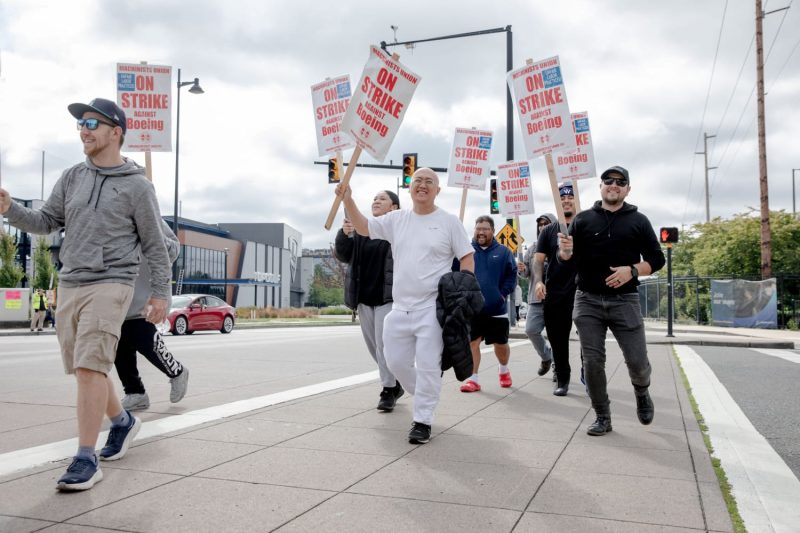With the Boeing factory strike surpassing its one-month mark, the escalating situation is amplifying growing pressure on the newly-appointed CEO David Calhoun. Protracted labor impasse, crusty negotiations, and widespread production disruption mar the once spotless reputation of the world’s largest aerospace company.
As we cross the 30-day strike line, a lack of resolution adds a layer of pronounced tension across the company’s facilities. Boeing’s Renton factory in Washington state, primarily responsible for the production of its flagship 737 Max, wears an ever-growing look of desolation as its frontline workers persist with their cause.
The strike erupted following an impasse in contract discussions. The disgruntled workforce, represented by the International Association of Machinists and Aerospace Workers (IAM), has demonstrated remarkable resilience, demanding better wages, improved job security, and enhanced workplace safety. Their solidarity response is an overwhelming call for a more favorable working environment and a tangible reflection of their distress over the perceived negligence.
Under the leadership of the new CEO, David Calhoun, Boeing faces an uphill struggle to navigate this crisis, considering its concurrent grounding of 737 Max aircraft following two fatal crashes. Yet, Calhoun is no stranger to tumultuous waters. With a rich history of steering companies through crises, he brings a fresh perspective, a value-based leadership style, and potential mediation strategies.
The Boeing strike’s continuation past the one-month mark is not unprecedented. In 2008, a similar strike lasted 58 days, underscoring the tenacity of this decorated workforce. However, the ongoing stoppage comes at a time when all eyes are on Boeing, given its recent safety lapses.
This labor struggle has ripple effects, affecting not only Boeing itself but also its vast network of suppliers who contribute different elements to the production process. These third parties, many of them small enterprises, are now grappling with the prolonged non-production spell, causing them financial strains, potential layoffs, and halted business growth.
Moreover, this strike couldn’t have come at a worse time for Boeing, considering the lingering impact of the COVID-19 pandemic. Travel restrictions and decreased airline demand already put the company in a financially precarious position, with the strike exacerbating the problems.
The resilient workers on the picket line are clear, prepared for the long haul. For Boeing’s new CEO David Calhoun, this one-month mark not only signals a mounting pressure to resolve the strike but also ushers in the need for broader corporate transformation and a revalidation of its established values. Navigating this crisis successfully would require the revival of faith among employees, stakeholders, and customers by reinforcing the importance of safety, transparency, and worker’s welfare.
This one-month mark is a reality check for both parties. For the workers, it is a measure of their collective strength and the depth of their grievances. For Boeing and its new CEO, it is a stark reminder of the urgent need to resolve the leadership and organizational challenges that exacerbated this crisis. It is a critical time for both the management and workers to revisit negotiations, align interests, and embark on a journey towards constructive resolution and corporate healing.
While the world watches with bated breath, the Boeing factory strike crosses the one-month mark. This crossroad, an intersection of labor and corporate concerns, is indeed a test of resilience, strategy, and grace under pressure for both parties involved. What remains now is to see how successfully Boeing’s new CEO can steer the corporate giant through these turbulent times.




